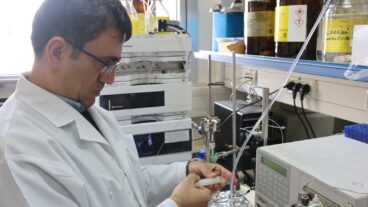The ExAblate system is intended to provide a non-invasive alternative to current treatments for symptomatic uterine fibroids, which include hysterectomy, myomectomy, uterine artery embolization, and drug therapy.Uterine fibroids are the most common reason for surgery among women of reproductive age, after caesarean section. Approximately 200,000 women in the United States currently undergo hysterectomies each year for the treatment of uterine fibroids.
But with an FDA panel’s recommendation for the approval of a new Israeli-designed system for non-invasive treatment of uterine fibroids, these statistics are likely to change dramatically.
The FDA’s Obstetrics and Gynecology Devices Panel recently recommended the ExAblate 2000 System, manufactured by InSightec Ltd., a majority owned subsidiary of Elbit Medical Imaging Ltd. for approval.
“We are pleased with the recommendation for approval and look forward to working closely with the FDA on the specific conditions for approval,” said Dr. Koby Vortman, President and Chief Executive Officer of InSightec.
“The ExAblate System is a breakthrough technology that has the potential to benefit millions of women around the world who are seeking a non-invasive alternative to surgery to deal with their uterine fibroid symptoms. Although the concept of focused ultrasound has been researched for over 60 years, this is the first time an implementation of this technology has been recommended for FDA approval.”
The device received the European CE mark in 2002 and is currently commercially available in Israel, Europe, and Japan.
Uterine fibroids occur in 20-25% of women of reproductive age and can cause a variety of problems, including abnormal vaginal bleeding, pelvic pain, pelvic mass, infertility and compression symptoms such urinary frequency and bowel obstruction.
Traditional treatments include surgical interventions which require the abdomen to be opened and prolonged hospitalization.
A variety of alternatives have also been introduced, which are minimally invasive surgical procedures and treatments, but all of these procedures are still invasive.
The ExAblate system is intended to provide a non-invasive alternative to current treatments for symptomatic uterine fibroids, which include hysterectomy, myomectomy, uterine artery embolization, and drug therapy.
The system uses focused ultrasound together with MR imaging to pinpoint tumors and effectively destroy them, without incisions, without anesthesia, and without the need for hospitalization.
The ExAblate System attaches to the standard MRI system used in many hospitals. During this outpatient procedure the patient lies inside the MRI scanner and highly focused ultrasound waves, which non-invasively ablate the uterine fibroid are emitted into the body.
The system is the first Magnetic Resonance guided Focused Ultrasound Surgery system to be reviewed and recommended for FDA approval.
The Israeli company’s breakthrough technology has already garnered international attention and honors. InSightec was awarded the 2004 IST Grand Prize for the Exablate by the European Information Society Technology as part of the Sixth Framework Programme of the European Union, at the IST conference in Milan, Italy on October 2, 2003.
The European IST Grand Prize is the most distinguished European Prize for innovative products and services in the field of Information Society Technologies. It is awarded based on technical excellence, innovative content, potential market value, and the capacity to generate new jobs.
The recent FDA panel recommendation was based on the results of a multicenter, controlled clinical study that was performed at centers in the United States, Europe, and Israel, including Brigham and Women’s Hospital, the Mayo Clinic, and Johns Hopkins Hospital in the US, St. Mary’s Hospital in London, Charite Hospital in Berlin, and Sheba Medical Center and Hadassah Hospital in Israel.
The primary endpoint of the study was to ensure improvement in uterine fibroid symptom severity, as measured using a patient treatment outcome questionnaire, and ensure safety of the device.
“Upon approval, women will have a significant alternative for a very common, debilitating condition. We are delighted to have participated in this ground-breaking study and hope that this will stimulate further research for fibroids,” said Elizabeth A. Stewart, M.D., Brigham and Women’s Hospital and co-principal investigator.
Co-principal investigator Clare Tempany-Afdhal, M.D., Brigham and Women’s Hospital added “the novel combination of Focused Ultrasound and Magnetic Resonance guidance provides a unique image-guided therapy that has the potential to be used for many other applications.”
InSightec Ltd is privately held company owned by Elbit Medical Imaging, General Electric, private investors, and employees. It was founded in 1999 to develop the promising MR guided Focused Ultrasound technology.
Headquartered near Haifa the company has over 80 employees and has invested more than $50 million in research, development, and clinical investigations. Its US headquarters are located in Dallas, Texas.
The ExAblate is only the first in a number of products the company hopes to develop. “The innovation and use of our sophisticated software and hardware to create a new world of surgery with visual tools and real time feedback that provide the physician with a true picture of what is really happening inside the body and also with system control to achieve the desired outcome ” says CEO Vortman.
“Our technology allows imaged based access to the tumor, effective treatment, without affecting neighboring tissue. ExAblate is already proving its ability to significantly improve the quality of life for the patients receiving treatments and future technology is under development to address other clinical applications such as liver, brain, breast and bone cancers.”












